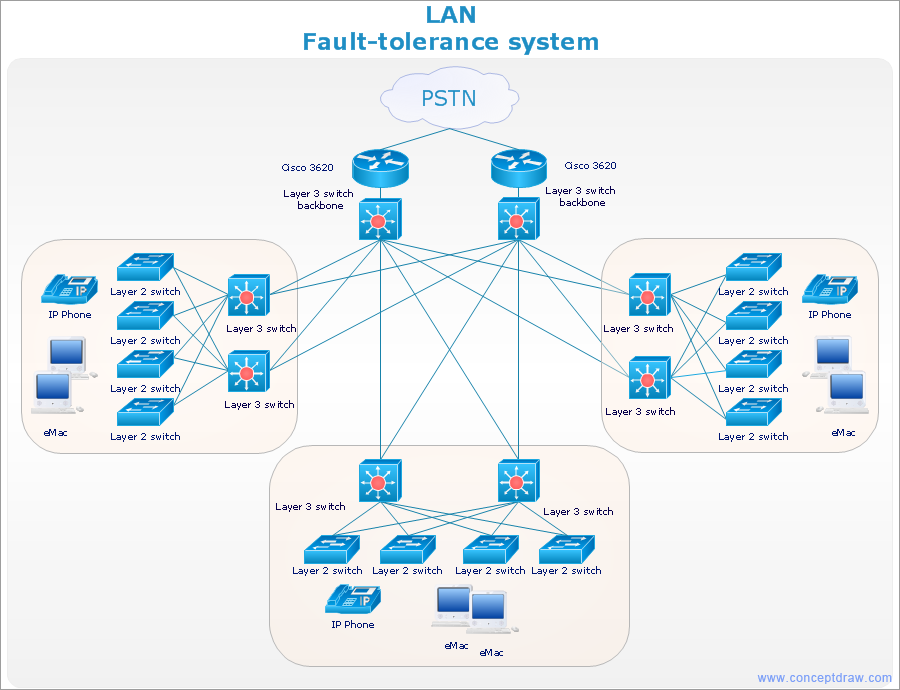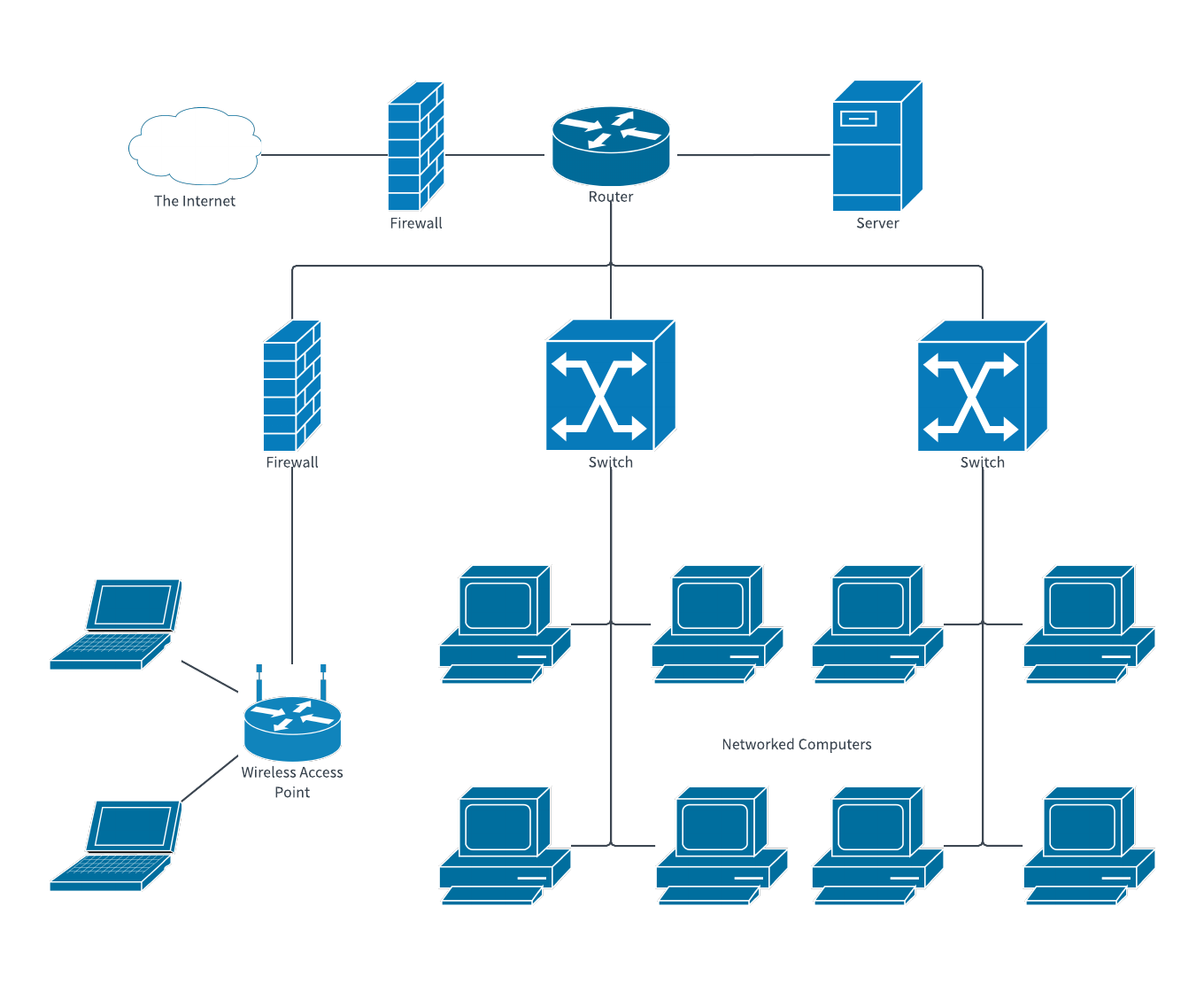How to draw a network diagram
Table of Contents
Table of Contents
If you’re in the world of networking, you know how crucial it is to be able to visualize a network topology. Whether you’re building a new network or troubleshooting an existing one, a network diagram is a critical tool that can help you quickly understand and diagnose issues. But how do you draw a network diagram in the first place?
When it comes to drawing a network diagram, there are often pain points that people encounter. For example, some may find it difficult to decide on the appropriate level of detail to include, while others may struggle to find the right tools to create the diagram.
At its most basic level, drawing a network diagram involves identifying and mapping out the devices and connections within a network. This may include switches, routers, computers, servers, and other network peripherals. It’s essential to have a clear understanding of the network topology and be able to identify which devices are connected to which others.
In this article, we’ll provide a comprehensive guide on how to draw a network diagram step-by-step. We’ll cover everything from identifying the devices on the network to choosing the right tools to create the diagram. By the end, you’ll have a solid foundation of knowledge that will allow you to create accurate and useful network diagrams.
What is a Network Diagram and Why is it Important?
A network diagram is a visual representation of a network’s physical layout, including devices and connections. It can be as simple or as detailed as necessary and is an essential tool for anyone working in a networking environment.
Network diagrams serve two primary purposes: firstly, they allow administrators to see the overall structure of a network, including all the devices and connections. This can be useful when planning changes, adding new devices or troubleshooting issues. Secondly, a diagram can be a helpful communication tool. It can be used to explain complex networking concepts to non-technical stakeholders, such as executives or clients.
Choosing the Right Tools for the Job
Before you start drawing your network diagram, you’ll need to choose the right tool for the job. There are a variety of software applications that can help you create network diagrams, ranging from free tools to enterprise-grade software.
Some popular options for creating network diagrams include:
- Microsoft Visio
- Lucidchart
- Draw.io
- Gliffy
 Once you’ve selected your tool, the next step is to identify the devices and connections in your network. This may involve running tools like traceroute or ping to identify the various endpoints in your network architecture.
Once you’ve selected your tool, the next step is to identify the devices and connections in your network. This may involve running tools like traceroute or ping to identify the various endpoints in your network architecture.
Identifying Network Devices and Connections
When identifying devices and connections for your network diagram, it’s essential to include every device that plays a role in the functioning of your network. This could include:
- Routers
- Switches
- Servers
- Printers
- Firewalls
- Modems
- Wireless access points
For each device in your network, you’ll need to document its IP address, hostname, and physical location. You should also document any connections between devices, including the type of cable used, the ports used, and the speed of the connection. By doing so, you’ll be able to create a comprehensive diagram that accurately reflects the network’s structure.
Distinguishing Between Types of Connections
When drawing a network diagram, it’s essential to distinguish between the different types of connections between devices. There are several types of connections you’ll likely encounter:
- Point-to-point connections - these are direct connections between two devices, such as a connection between a switch and a router.
- Bus connections - these are connections in which multiple devices connect to a single cable, such as a series of computers that connect to a single switch.
- Star connections - these are connections in which devices connect to a central hub, such as a series of computers that connect to a switch.
- Ring connections - these are connections in which devices connect in a circular fashion, such as a series of computers that connect to each other in a loop.
 Common Network Diagram Symbols and Icons
Common Network Diagram Symbols and Icons
When drawing a network diagram, it’s important to use consistent symbols and icons to represent various devices and connections. This can help ensure that the diagram is easy to read and understand by all parties.
Some common network diagram symbols and icons include:
- Servers - represented by a rectangle
- Routers - represented by a circle
- Switches - represented by a rectangle with diagonal lines
- Firewalls - represented by a rectangle with flames
Conclusion of How to Draw a Network Diagram
Drawing a network diagram is an essential task for anyone working in a networking environment. By following the steps outlined in this guide, you’ll be well on your way to creating accurate and useful network diagrams. By choosing the right tool, identifying devices and connections, and using consistent symbols and icons, you’ll be able to create diagrams that are easy to read and understand.
Questions and Answers
Q: What is the purpose of a network diagram?
A: A network diagram is a visual representation of a network’s physical layout, including devices and connections. Network diagrams serve two primary purposes: firstly, they allow administrators to see the overall structure of a network, including all the devices and connections. Secondly, a diagram can be a helpful communication tool. It can be used to explain complex networking concepts to non-technical stakeholders, such as executives or clients.
Q: What tools can I use to create a network diagram?
A: Some popular options for creating network diagrams include Microsoft Visio, Lucidchart, Draw.io, and Gliffy.
Q: How do I identify devices and connections in my network?
A: Start by running tools like traceroute or ping to identify the various endpoints in your network architecture. For each device in your network, you’ll need to document its IP address, hostname, and physical location. You should also document any connections between devices, including the type of cable used, the ports used, and the speed of the connection.
Q: What symbols and icons should I use when drawing a network diagram?
A: When drawing a network diagram, it’s important to use consistent symbols and icons to represent various devices and connections. Some common network diagram symbols and icons include servers, represented by a rectangle, routers, represented by a circle, and switches, represented by a rectangle with diagonal lines.
Gallery
Draw Network Diagram Based On Templates And Examples | Network Diagram

Photo Credit by: bing.com / network diagram draw templates software examples based conceptdraw topologies drawing project template rapid powerful rich
Free Network Diagram Tools – Lakkireddymadhu

Photo Credit by: bing.com / network diagram tools software topology visio business drawing architecture small system vrt equipment bookingritzcarlton info map icons popular engineer cisco
Network Diagram Software - Free Download Or Network Diagram Online

Photo Credit by: bing.com / network diagram software drawing topology smartdraw draw diagrams example office google using does try powerpoint easily word drive single excel
How To Draw A Network Diagram | EdrawMax Online

Photo Credit by: bing.com / network diagram office draw template examples example lucidchart edraw templates software edrawmax plan chart tools execute before pixabay source cloud
How To Draw A Computer Network Diagrams

Photo Credit by: bing.com / network system diagram lan computer cisco drawing draw diagrams visio management lld hld bandwidth using networks examples sample tolerance software





